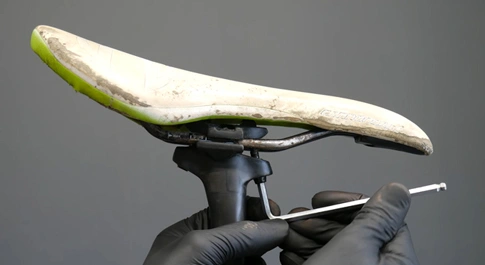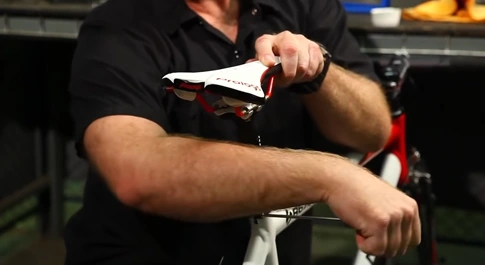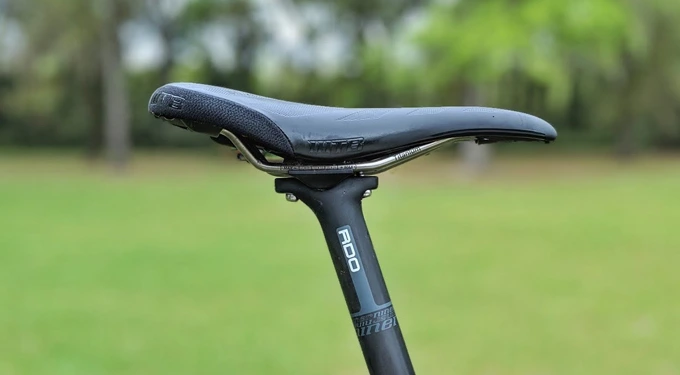When it comes to cycling, one of the most important things you need to get right is your Seatpost length. This measurement determines how far your seat is from the handlebars, and getting it wrong can lead to discomfort or even injury.
Different types of bikes require different Seatpost lengths, so you should determine what size you require before purchasing a bicycle. If you do need to measure the seat post length yourself, there are a few things you need to keep in mind.
We’ll show you how to measure seat post length and give you tips on what to do if you’re unsure which size you need. You can be assured that you will receive the perfect fit.
How Do You Measure Seatpost Length?

Seatpost length is important because if your post is too short, it can cause problems with saddle height and placing your feet on the pedals. Conversely, if your post is too long, it can make pedaling feel uncomfortable and may even cause damage to your frame. This is why it is essential to get the right seat post length.
Many bicycles come with seatposts of standard lengths, but if you’re changing seats or frames, you’ll need to measure the seatpost to make sure it will fit.
Seatposts are typically measured in millimeters, so be sure to take care when converting from inches to millimeters. A few items are required before you begin measuring seat post length, but it is a relatively simple process.
To measure a seat post first, extend it to its full length. Then, using a metric ruler or tape measure, measure from the top of the post where it enters the seat tube to the bottom of the post where it emerges. This measurement will give you the minimum insertion depth required for your new seat post.
If you wish to purchase a new seatpost, please make sure that you obtain an accurate measurement of your existing seatpost.
What is the Standard Seatpost Length?
The seat post is one of a bicycle’s most essential parts, yet it is often overlooked. It plays an important role in supporting the rider by connecting the saddle to the frame.
There are some variations depending on the type of bike, but the standard length is 27.2 mm (1.07 in). For example, road bike typically has longer seatposts than mountain bikes. The reason for this is that road bikes are designed for longer rides, and thus the rider needs more support.
In contrast, mountain bikes are designed for shorter rides over rougher terrain, and thus the rider does not need as much support. Regardless of the type of road bike, it is important to choose a seatpost that is the appropriate length for your riding style.
What is the Importance of Measuring a Seatpost?
A seat post is an important component of a bicycle, and it is essential to measure it correctly in order to ensure a comfortable ride. The seat post is the part of the frame that supports the saddle and needs to be the right length for the rider to sit comfortably.
If the seatpost is too short, the rider will be uncomfortable and may even experience pain. Conversely, if the seat post is too long, it will be difficult to control the bike, and the rider may find themselves slipping off the saddle. The Seatpost should be measured before installation in order to prevent these problems.
What is the Best Seat Height for a Bike?

In order to answer this question, several factors must be considered, including your height, leg length, and riding style. The ideal seat height for most people is 2 to 6 inches higher than the frame. This allows you to straddle the bike comfortably with your feet flat on the ground.
Once you transition from straddling the frame size to straddling the saddle, you should only be able to reach the ground while being on your tippy toes. This ensures that you have enough clearance to pedal without hitting your knees on the handlebars.
If you are a particularly tall or short rider, you may need to adjust your seat height accordingly. Ultimately, the best way to find the perfect seat height is to experiment until you find a position that feels comfortable and efficient.
How Do I Know What Size My Bike Seatpost Is?
If you’re looking to replace your bike seat post, you must first determine which size is appropriate. Seatposts are measured by both diameter and length. The diameter is the width of the post, and it’s important to get this measurement right because if the post is too small, it can slip inside the frame and get stuck.
To avoid this, measure the internal diameter of your frame with a caliper before buying a new seat post. As for length, this is less critical because you can always cut a seatpost down to size if necessary. Choosing a post will give you enough room to adjust your saddle height is still important.
The best way to do this is to measure the distance from the top of your frame to the center of your current saddle and then add an extra 2-3 inches (5-7 cm) to allow for adjustment. With these measurements in hand, you’ll be able to find the perfect seatpost for your bike.
How Do You Choose the Right Seatpost?
Choosing the right seat post is a critical part of setting up your bicycle for comfort and performance. The seatpost is the part of the frame that supports the saddle, and it must be the correct length and diameter for your bike.
Most seatposts are made of aluminum, but carbon fiber posts are also available. The type of seatpost you choose will depend on your riding style and the type of bike you have. For example, a lightweight racing bike will require a different seatpost than a heavy-duty mountain bike.
Once you have determined the type of seatpost you need, you can then choose the right model to fit your bike. Seatposts are available in various styles, so do your research before shopping. With a little bit of effort, it is possible to find the perfect seatpost that will keep you comfortable throughout your riding experience.
How Do I Install a Seatpost?

Seatposts are an integral part of any bicycle and must be installed correctly to provide a comfortable and safe ride.
- The first step is to make sure that the seatpost is the correct frame size.
- Next, grease the seatpost and insert it into the frame. Use a hammer to tap it down until it is flush with the top of the frame when it has been installed.
- Finally, use a wrench to tighten the seat post clamp.
If done properly, this will secure the seatpost in place and prevent it from slipping during use. The process of installing a seatpost may seem daunting, but following these simple steps will ensure a successful installation.
How Do I Adjust My Seatpost?
If you’re having trouble getting comfortable on your bike, it might be time to adjust your seatpost. You may want to lower or raise the seat according to your riding style to find the perfect balance of comfort and performance. Luckily, adjusting your seatpost is a relatively simple process.
It is first necessary to loosen the pinch bolt at the point at which the seat post slides into the frame. Then, twist the seat to raise or lower the post as needed and tighten the bolt back up. Once you’ve adjusted the seat height, you’ll need to ensure that the position is comfortable and won’t put undue strain on your knees or hips.
To do this, get on your bike and place the ball of your foot directly on top of the pedal spindle when the crank is at the bottom of the rotation. If your leg is straight or slightly bent at the knee, then you’re good to go.
Nevertheless, if you have a severely bent leg or your leg appears too loose, then you should readjust the seatpost accordingly. You’ll eventually find the perfect position for your needs with a little trial and error.
How Do I Remove a Seatpost?
The seat post on bicycles are a crucial part of any bicycle, but they have to be removed sometimes for repairs or adjustments. It is relatively simple to perform the process, though you must be careful not to damage the frame in the process.
First, loosen the pinch bolt where the post slides into the frame. Next, twist the seatpost and pull it out of the frame. You may need to use a little force to get it out, but be careful not to damage the frame. Once the seatpost is out, you can make any necessary repairs or adjustments.
Then, simply reverse the process to put the seatpost back in place. With a little care and attention, removing and replacing a seatpost is a quick and easy process. It might seem like a daunting task, but it’s actually quite simple.
How Do You Measure A Mountain Bike Seat Tube?
You should measure in millimeters, and the result will indicate the size of your seat tube. Using this method, you can also measure other parts of the frame, such as the top or head tube.
The first step is to insert the end of the tape measure into the socket at the top of the seat tube. Then, run the tape measure down the seat tube length until you reach the bottom bracket. And lastly, note down the measurement.
Does Measure Seatpost Length Matter?
While it may seem like seat post length is a minor consideration, it can significantly impact your riding experience. A longer post generally provides more comfort, as it gives you more room to adjust your position. A longer post can also help absorb vibrations, making for a smoother ride.
If the post extends too far from the frame, the bike may not handle it well. Be careful not to do this. Ultimately, the best seatpost length for you will depend on your individual dimensions and your frame’s geometry. Also, keep in mind that most seat posts can be cut down to size if necessary.
Conclusion
Now that you know how to measure seat post length, it’s time to put that knowledge to good use. If you choose the right post for your bike frame, you can ride more comfortably and enjoyably.
Remember, Seatpost length is just one of many factors to consider when setting up your bike. But if you take the time to get it right, you’ll be rewarded with a better riding experience. With a little trial and error, you’ll eventually find the perfect seat post for your needs.

